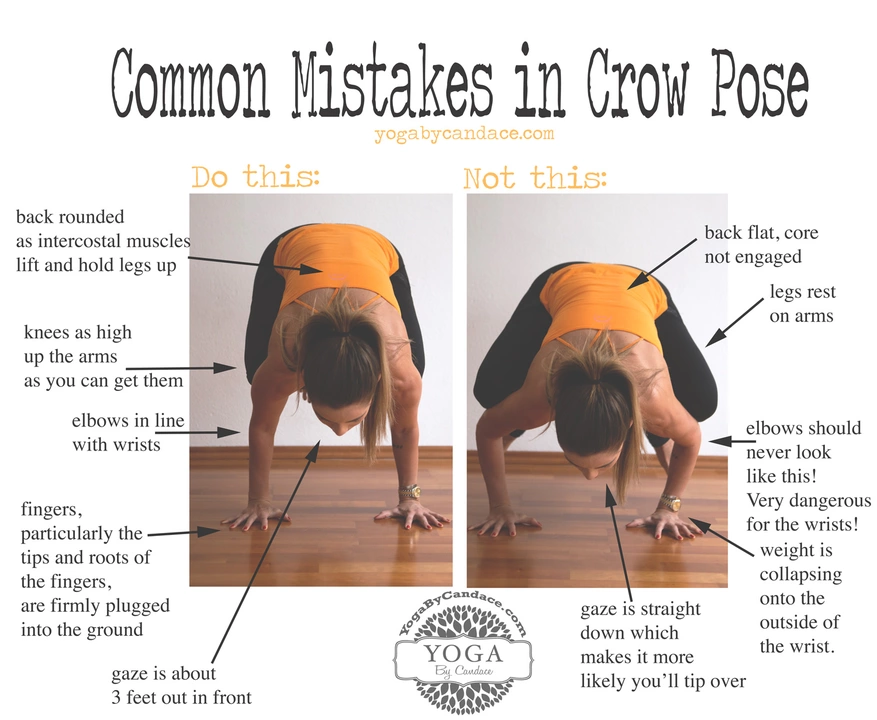Crow Pose (Bakasana): How to Practice and Progress Safely
Crow pose, or Bakasana, is a compact arm balance that tests strength, balance, and focus. It’s one of those poses that looks intimidating but becomes manageable with simple progressions. This guide gives clear steps, useful cues, and safe modifications so you can try Crow without unnecessary strain.
How to get into Crow Pose — step by step
Start in a low squat with feet hip-width apart and knees wide. Place your palms on the floor shoulder-width apart, spread fingers, and press the fingertips down to create a stable base. Bring your knees to the outside of your upper arms, as high as they can go. Shift your weight forward slowly so your shoulders move past your wrists.
Find a point on the floor ahead of you; keep your gaze there to avoid tipping forward. Engage your core and draw your belly in. Lift one foot a little, then the other. Aim to hover both feet off the floor, knees hooked on triceps. Keep small micro-bends in the elbows—don’t lock the joints. Breathe steady and hold for a few breaths or until you feel ready to lower down.
Progressions, drills, and safety tips
Work on these drills before a full attempt: 1) Frog pose to open hips and get knees on arms; 2) Crow lean from tabletop to get used to weight shift; 3) Planks and chaturanga to build arm strength; 4) Hollow-body holds for core stability. Practice jumping up only when you feel confident with the forward shift.
Use props: place a block under your forehead to catch you if you tip, or stack blankets under your feet to reduce the height you need to lift. A teacher or spotter can guide your forward shift safely. Warm up wrists with gentle circles and wrist stretches—wrist pain is common if you rush in without preparation.
Common mistakes: looking down or back, which throws balance off; collapsing the core; straightening elbows too early; placing knees too low on the arms. Fix these by keeping the gaze forward, pulling ribs toward hips, maintaining elbow micro-bend, and moving knees higher toward armpits.
If you lose balance, tuck your chin and roll forward gently rather than dropping. Never grip or force into the pose—progress by consistency, not by pushing one big attempt.
Short, frequent practice beats long, rare sessions. Try 5–10 minutes focused on arm balances two to three times a week. Track small wins: more forward lean, longer holds, or a confident hop. Crow builds arm strength, tones the core, and sharpens concentration — all useful on and off the mat.
Ready to try? Warm up, use a soft landing, and take it one small step at a time. Crow is a skill you earn with patience and smart practice.
How to prevent my knees from slipping in a crow pose?
In my latest blog post, I discuss the common issue of knees slipping in crow pose and share some useful tips to prevent it. I emphasize the importance of building a strong foundation by warming up the wrists and engaging the core. Additionally, I mention the role of proper hand placement and the use of a towel or mat for added grip. Practicing hip openers and engaging the inner thighs can also help in maintaining stability. Finally, I encourage patience and consistent practice to master this pose without slipping.
